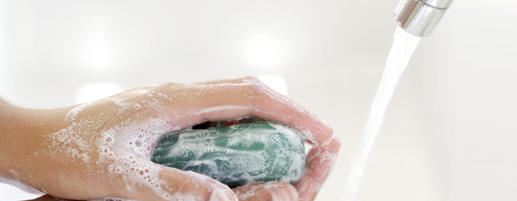
America’s food supply is among the safest in the world, yet recent salmonella outbreaks in eggs have some people wondering about what foods are safe to eat and what to do to avoid food-borne illness.
Today’s blog takes a look at foods with the lowest risk and includes tips on how to handle and prepare food to keep contamination at an all time low.
The FDA estimates that there are more than 76 million cases of food-borne illness annually, meaning making wise food choices and taking simple precautions can lower the risk dramatically. The best way to avoid food-borne illness is to prevent it. Foods most likely to cause food poisoning include raw or undercooked meat, poultry and fish, and unpasteurized milk.
Practice safe food handling at home by doing the following:
• WASH hands and surfaces often, especially after handling raw meat.
• COOK foods to proper internal temperatures. Beef or lamb should be cooked to an internal temperature of, at least, 145°F (for medium rare) and up to 160°F (for well done), turkey and chicken should be cooked to 180°F and pork 160°F – 170°F and eggs to at at least 160°F.
• SEPARATE to avoid cross-contamination by keeping utensils that have been used for cutting raw foods separate from utensils used for cooked foods, this includes knives and hard surfaces like cutting boards.
• CHILL, refrigerate or freeze foods promptly after grocery shopping. Check refrigerator temperatures using a food thermometer. Refrigerator temperatures should be between 36°F – 40°F and your freezer should be at 0°F or below. Most pathogenic organisms grow at temperatures between 40°F – 140°F.
Why Hokto Mushrooms Are a Safer Choice
While food borne illness from vegetables and fruits are rare, it’s nice to know that growers like Hokto take extra precautions to ensure a safer product. Conventionally grown mushrooms (e.g. button) often use a compost of dirt and manure to provide nutrients for growth. By using dirt and manure, it opens food up to naturally occurring bacteria and often insects.
However, the culture used to grow the Hokto mushrooms is not the typical manure-containing compost, but rather a substrate mixture consisting of non-genetically modified corncob meal, soy, and rice bran meal. These ingredients are steam heated in plastic bottles to help destroy harmful bacteria.
The use of plastic bottles to “grow” the mushrooms and robotic harvesting of the mature Maitake, King Trumpet, White and Brown Beech mushrooms from the bottle directly into the packaging, minimizes contamination even further. So if you’re concerned about food safety for your family, follow the food safety tips above and enjoy Hokto mushrooms.
Bottom line: It’s wise to practice food safety. Hokto mushrooms are part of a safe approach and taste great!

